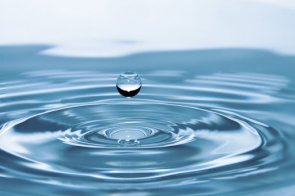
Lessons in Aquaponics: pH and Plants
If you are an AquaGrove grower, then you are most likely already aware of the importance of managing pH levels in your system. As highlighted in the learning guide that accompanies the AquaGrove, managing pH is vital to a healthy aquaponics system; that being stated, it can also be challenging at first due to there being three living areas to consider: plants, fish, and bacteria.
While plants generally prefer a slightly acidic pH (low sixes to upper fives), the fish and bacteria prefer a slightly alkaline pH (high sevens to low eights). Therefore, pH management in aquaponics is an exercise in compromise between the two ranges. The ideal target is a pH of 6.8 to 7.
pH Over the Life of Your Aquaponic System
One of the most common questions received at AquaGrove is if a grower can simply use tap water to fill the tanks. And while it is suggested to use a carbon filter in order to eliminate chlorine and potential contaminants to fish, many growers have successfully used tap water by leaving the water to 'sit' for 48 hours. During this time, it needs to be aerated to help boost chances of chlorine and other contaminants being removed. That being stated, the success of this process will be highly dependent on the quality of your local water source.
If your water contains chlorine, allowing the system run with the air stone (included with AquaGrove) for a few days to aerate should be adequate to dechlorinate the water. During this time, you should be in the practice of adjusting the water temperature and pH for the fish you have selected. For warm water fish like Tilapia, the water temperature should be 70 – 74 degrees Fahrenheit, and as previously stated, the ideal pH level is 6.8 to 7.0.
Tap water usually runs above a neutral pH (7). Most water comes out of the tap at pH levels above a neutral 7 because municipalities are concerned about the long-term corrosive effects of acidic water. But don’t worry if your system’s water comes from a well—a slightly high pH is usually not a problem because when you start up an aquaponics system, you cycle it. Cycling refers to the process of establishing a beneficial nitrifying bacteria colony which will convert fish waste into plant fertilizer. This process is called the Nitrogen cycle. You will need to test your water daily with a test kit for: Ammonia, Nitrites, Nitrates, DO, Temperature, and pH. It is important to record all of your data on a daily basis during the cycling process. Records will allow you and your students the opportunity to observe your water quality, and enable you to be proactive in diagnosing potential problems while catching them early.
To learn more about aquaponics and how to get started with an AquaGrove “Learn and Grow” system, contact AquaGrove today.
